Forex
Asia FX skittish, dollar at 4-mth low before key inflation data
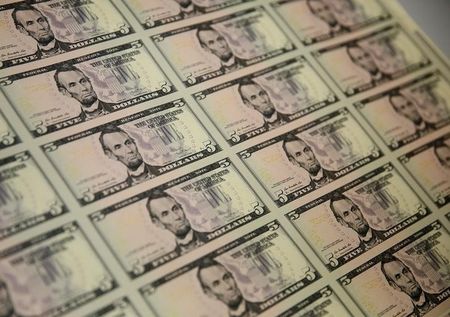
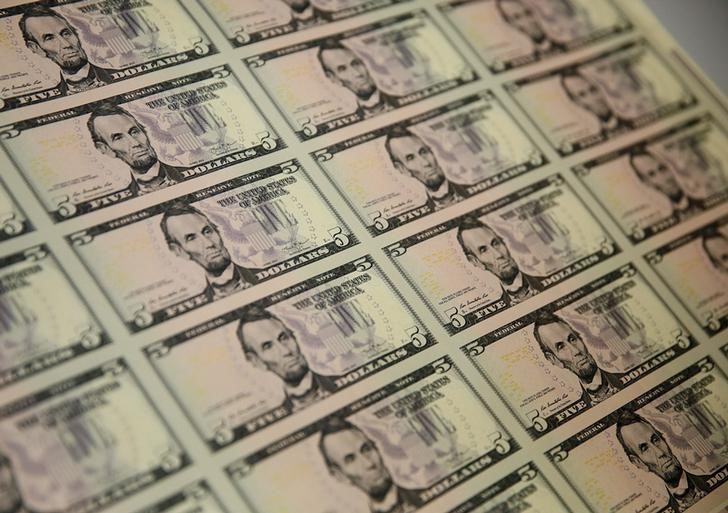
© Reuters.
Investing.com– Most Asian currencies kept to a tight range on Friday, while the dollar hovered around four-month lows as markets awaited more affirmation that the Federal Reserve will cut interest rates earlier in 2024.
Regional units were sitting on some gains this week, while the dollar was set for a second week in red after dovish signals from the Fed saw traders pricing in between three to five rate cuts by the central bank in 2024.
But gains in Asian currencies were held back by uncertainty over the timing of the cuts, especially as several Fed officials pushed back on expectations that monetary easing from the central bank was imminent.
Japanese yen retreats on soft inflation data, BOJ uncertainty persists
The was among the bigger underperformers for the day, falling 0.3% after data showed that inflation eased as expected in November. The currency was also set for a 0.2% weekly loss.
hit a 16-month low as a cooling Japanese economy saw spending decrease, while easing food prices also helped.
But the inflation reading pointed to lesser pressure on the Bank of Japan to consider pivoting away from its ultra-dovish policy, given that high inflation was a key point of contention for the central bank. November’s readings were still well above the BOJ’s 2% annual target.
While the central bank is still expected to reverse its ultra-dovish stance in 2024, the softer inflation reading brings more uncertainty over the timing of the move. The BOJ offered scant cues on a pivot during its meeting earlier this week, which battered the yen.
Broader Asian currencies traded in a flat-to-low range as traders turned cautious before key U.S. inflation data due later in the day.
The fell 0.3%, retreating slightly from a near five-month high hit in the prior session. The currency was also set to add 1.3% this week, as it benefited from improving risk appetite in the wake of a dovish Fed.
The rate-sensitive shed 0.3%, while the remained pinned near record lows of over 83 against the dollar.
The continued to lag its peers, losing 0.1% Friday and heading for a 0.4% weekly loss. Concerns over a sluggish economic rebound in the country kept traders largely wary of investing in most Chinese assets, with stocks bearing the brunt of this aversion.
Dollar at 4-mth low with PCE inflation in focus
The and moved little in Asian trade on Friday after sinking to their weakest levels since early-August.
A slight downward revision in third-quarter saw traders grow more optimistic over interest rate cuts in 2024, although the reading still reflected strong growth in the U.S. economy.
Focus was now squarely on data- the Fed’s preferred inflation gauge- due later on Friday. The reading is expected to show persistent stickiness in U.S. inflation- a scenario that gives the Fed more impetus to keep rates higher for longer.
U.S. inflation is still trending well above the Fed’s 2% annual target, with any more signs of stickiness pointing to less dovish measures by the Fed in 2024. Such a scenario could trigger some pullback in Asian currencies, which had a strong run so far in December.
Markets are still positioning for a 25 basis point rate cut in March 2024, according to .
Forex
Five charts on the Japanese yen’s decades-long drop
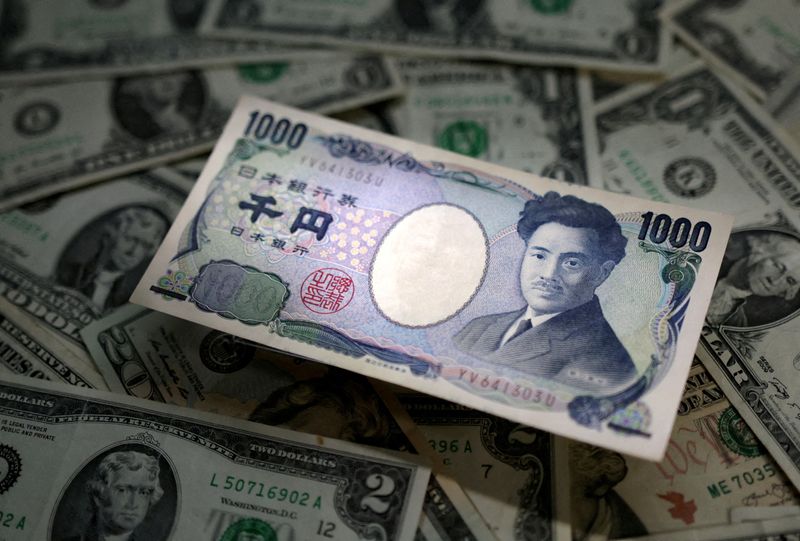
By Marc Jones
LONDON (Reuters) – Japan’s yen saw a sudden jump on Monday, suggesting the country’s authorities may have finally followed through on the FX market intervention warnings they have be making for months.
Monday’s moves follow a near-11% drop in the yen’s value against the dollar this year and a 35% slump over the last three decades that has pushed it to a 34-year low.
Here are five charts to show what has been happening.
1/INTERVENTION EFFORTS
Monday’s suspected intervention came after the yen dived past 160 to the dollar, well below where most FX traders had thought it would get to before the Bank of Japan reacted.
The last time authorities intervened was in September and October of 2022. They were estimated to have spent as much as 9.2 trillion yen ($60.78 billion) defending the currency at that time.
The other big effort came during the Asian financial crisis in 1998, when the yen lost almost 25% in just 14 months and reached nearly 148 per dollar in August that year. The United States joined in with the intervention push and the yen rallied over 35% in the following four months.
There has been intervention in the opposite direction too. In March 2011, Group of Seven (G7) nations jointly stepped in to stem yen strength when the currency spiked to a record high in the aftermath of a major earthquake that also crippled the large Fukushima nuclear plant.
2/TOKYO DRIFT
This isn’t a sudden thing. The yen has been universally weak over the last four years. Not only is it down 31% against the greenback over this period, it is down 29% against China’s currency, 29.5% against the euro and nearly 36% against the safe-haven Swiss franc.
remove ads
.
3/STOCK UP
The weak yen has been no bad thing for Japan’s stock market which is filled with companies that sell their products around the world. The weak yen keeps them competitive and has helped lift the market over 162% over the last decade, which is not far off the 174% rise the U.S. has seen over the same timeframe.
4/YIELD VS YEN
One of the main drivers of the yen’s weakness is that Japanese interest rates are far lower than elsewhere in the world. Benchmark 10-year U.S. government bonds, for example, currently yield 3.7 percentage points more than Japan’s.
This differential means it is not appealing for big international investors like pension funds to buy those Japanese government bonds, or JGBs as they are known, which it turn caps the demand for the yen.
Japan’s government debt-to-GDP ratio is also among the highest in the world, having more than trebled to close to 260% from 85% back in 1994.
5/WHERE WE ARE AT
The yen’s drop since the start of January is its third worst start to a year in the last three decades and the fifth time in the last six years that it has been down at this stage of the year.
Forex
Dollar slips, while yen soars after suspected intervention
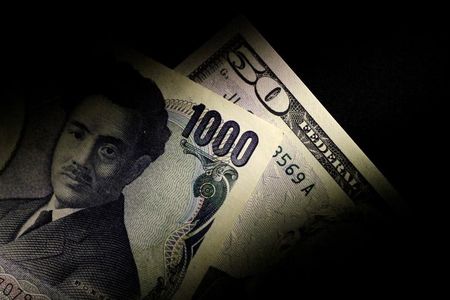
Investing.com – The U.S. dollar fell Monday ahead of the latest Federal Reserve meeting, while the yen soared amid speculation Japanese authorities have been intervening to try and stem its seemingly relentless decline.
At 04:45 ET (08:45 GMT), the Dollar Index, which tracks the greenback against a basket of six other currencies, traded 0.2% lower at 105.630, having climbed to 106.00 on Thursday.
PCE data points to late rate cut
The dollar has edged lower at the start of the new week, but was still stilling on strong gains of over 1% so far in April as traders have largely priced out most expectations of early rate cuts by the Fed.
Friday’s data, the Fed’s preferred inflation gauge, came in hotter than expected for March, pointing to rate cuts coming much later in the year than had been expected at the start of 2024.
The focus this week is now squarely on a meeting, which concludes on Wednesday. The central bank is expected to keep rates steady and potentially offer a hawkish outlook, given recent stickiness in U.S. inflation.
“PCE figures have confirmed that inflation remains too hot, and last month’s very strong jobs figures are likely to prompt a more cautious tone by Chair Jerome Powell on the prospect of rate cuts,” said analysts at ING, in a note.
The Fed meeting comes ahead of Friday’s monthly jobs report, which will give a fresh look at the strength of the U.S. labor market.
Economists expect the economy to have added 243,000 in April, moderating from 303,000 in March, while the is expected to remain steady at 3.8%.
remove ads
.
Intervention to support yen?
Most of the action in the foreign exchange market has been seen In Asia Monday, with slumping 1.8% to 155.56 after earlier climbing as high as 160.245.
The sharp nature of the move has led many to look to the authorities for intervention, although Japan’s top currency diplomat Masato Kanda declined to comment when asked if authorities had intervened.
Forex markets have been on edge for weeks for any signs of action from Tokyo to prop up a currency that has plunged to 34-year lows against the dollar even though the central bank exited from negative interest rates last month.
“While not yet official, there are strong indications that Japan intervened in the FX market this morning after USD/JPY touched 160.0,” ING added. “If we follow the same script as 22 September 2022, USD/JPY should remain volatile throughout the session before stabilising around 156-157.”
Euro edges higher after German inflation data
In Europe, rose 0.3% to 1.0722, benefiting from the dollar’s weaker tone, while traders digested a series of European inflation releases.
rose 3.3% on the year in April, a monthly increase of 0.7%, slightly below expectations.
A number of German states also released their April consumer figures, with the most populous state, North Rhine Westphalia, releasing numbers that remained slightly above the European Central Bank’s 2/0% medium-term target.
The ECB is planning to cut interest rates in June but the outlook further out remains clouded by rising energy costs, stubbornly high services inflation and continued geopolitical tensions.
remove ads
.
rose 0.3% to 1.2528, benefiting from the recent dollar weakness.
“The recent rollercoaster in BoE policy comments and a substantial repricing higher in U.S. rates have left the Sonia curve attached to the prospect of an August rate cut, but also signal market reluctance to price in additional cuts,” ING added.
Elsewhere, traded largely flat at 7.2462, while rose 0.4% to 0.6558, on speculation that a hotter-than-expected first-quarter inflation reading will attract more interest rate hikes from the Reserve Bank of Australia.
Forex
Instant view: Japan’s yen jumps against the dollar after earlier plunge
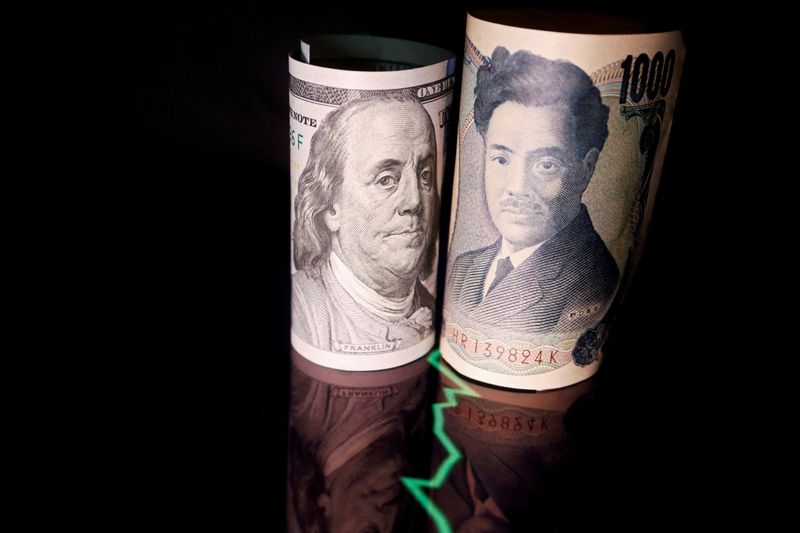
(Reuters) – The Japanese yen jumped suddenly against the dollar on Monday, with traders on high alert for signs of intervention by Japanese authorities to boost the currency that is languishing near 34-year lows.
The dollar fell sharply to 156.55 yen from as high as 160.245, and it was not immediately clear what was behind the move.
Traders are on edge for any signs of action from Tokyo to prop up a currency that has fallen 11% against the dollar so far this year.
Comments:
TONY SYCAMORE, MARKET ANALYST, IG, SYDNEY
“The move has all the hallmarks of an actual BoJ intervention and what better time to do it than other on a Japanese public holiday which means lower liquidity in and more Bang for the Bank of Japan’s buck!”
KYLE RODDA, SEENIOR FINANCIAL MARKETS ANALYST, CAPITAL.COM
“My gut says it would have been more rapid and announced by the MOF if it was. But we’ll have to see!”

 Forex2 years ago
Forex2 years agoForex Today: the dollar is gaining strength amid gloomy sentiment at the start of the Fed’s week

 Forex2 years ago
Forex2 years agoHow is the Australian dollar doing today?

 Forex1 year ago
Forex1 year agoUnbiased review of Pocket Option broker

 Forex2 years ago
Forex2 years agoDollar to pound sterling exchange rate today: Pound plummeted to its lowest since 1985

 Cryptocurrency2 years ago
Cryptocurrency2 years agoWhat happened in the crypto market – current events today

 World2 years ago
World2 years agoWhy are modern video games an art form?

 Stock Markets2 years ago
Stock Markets2 years agoMorgan Stanley: bear market rally to continue

 Economy2 years ago
Economy2 years agoCrude oil tankers double in price due to EU anti-Russian sanctions

































